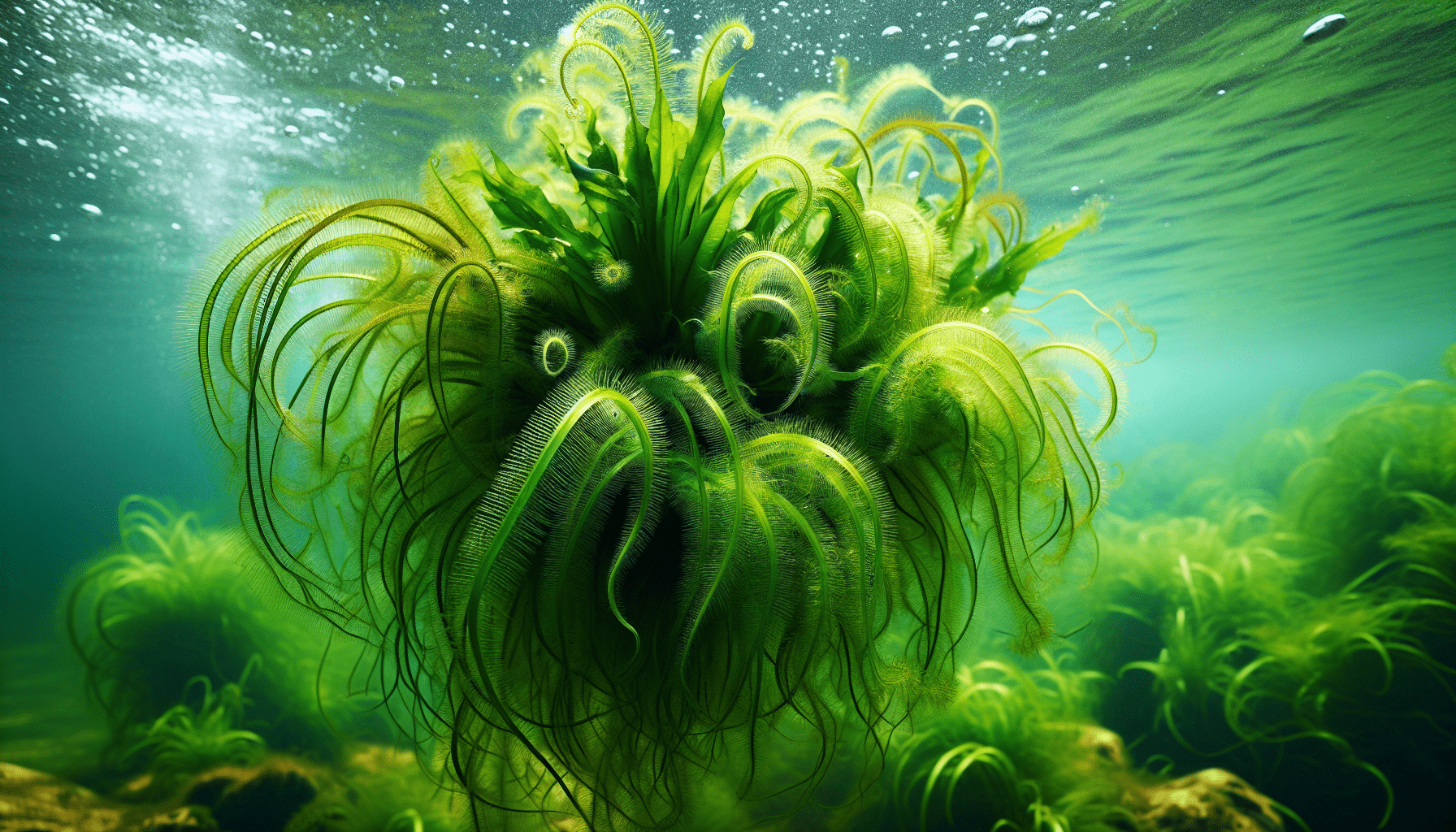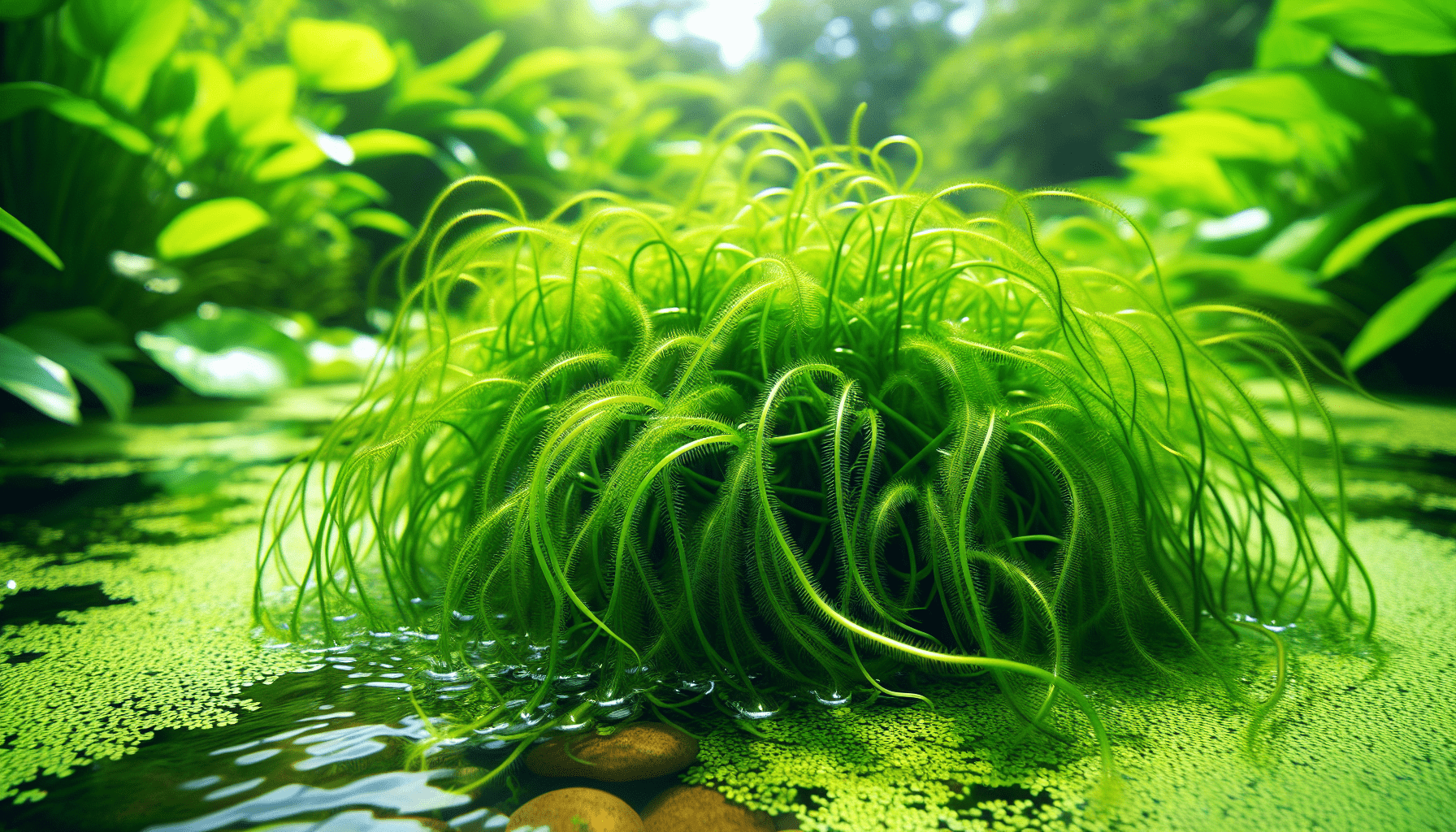You are about to explore an in-depth paper on the aquatic plant, Egeria Densa – a species often classified as an aquatic weed. This article primarily aims to discuss Egeria Densa, providing intricate details about its biological profile, distribution, and ecological significance. Throughout your reading journey, you will be empowered with complex understanding of the plant’s taxonomy, growth characteristics, and its global influence in freshwater bodies. Get ready to unravel the intriguing world of Egeria Densa and the consequences of its rapid and thick growth in aquatic ecosystems.

Overview of Egeria Densa
Egeria Densa, a vibrant aquatic plant native to South America, occupies a complex and multifaceted role within the realm of aquatic life. Renowned for its emerald hues and vivacious blooms, this prolific species interfaces with its environment in a myriad of ways, from ensuring symbiotic harmony within aquatic ecosystems to becoming an unwelcome invasive presence.
Origin and Habitat
Your exploration of Egeria Densa begins in the verdant waterways of South America. Argentina, Brazil, and Uruguay are its original homelands where it thrives in slow-moving rivers and warm lakes. As an adaptive and hardy species, it has migrated across continents, establishing a foothold in North America, Europe, Africa, Asia, and Australia.
Physical Characteristics
The dense foliage of Egeria Densa is a distinguishing element of its physical appearance. Radiating a bright emerald color, its long and slender stalks support leaves arranged in dense whirls, giving rise to its alternate name, Brazilian Waterweed. The plant also produces small white flowers on the water’s surface, further enhancing its overall visual appeal.
Common Names
Egeria Densa has enraptured botanists and aquatic enthusiasts through the ages, each culture attributing it a different name. It is known as Waterweed in some places, while some refer to it as the Anacharis, a term of Greek origins which translates to ‘upwards’. Other names include Brazilian Elodea and Dense Waterweed.
Reproduction Mechanism
Egeria Densa primarily relies on asexual propagation for its proliferation, where a new plant grows from a fragment of an existing one. Rare instances of sexual reproduction exist, achieved through the use of flowers that bud on the surface of the water. Both mechanisms have allowed it to colonize water bodies around the world successfully.
Egeria Densa in Aquascaping
Aquascaping, the art of crafting underwater landscapes, holds Egeria Densa in high regard not only for its luxuriant visual aesthetics but also for its inherent biological advantages.
Ideal Conditions for Growth
Egeria Densa thrives best in temperatures ranging from 20 to 24 degrees Celsius. While it can manage softer light, it prefers bright conditions. Sand or gravel offers a suitable substrate, and the plant benefits from nutrient-rich water.
Role in Creating a Balanced Ecosystem
In an aquascape, Egeria Densa diligently cycles nutrients, oxygenates the water, and provides shelter for aquatic organisms, all of which helps to maintain biodiversity and foster a balanced ecosystem.
Maintaining Egeria Densa in Aquariums and Ponds
Despite its resilience, Egeria Densa demands a degree of care. Regular pruning prevents unnecessary shadowing and promotes healthier growth. Preserving the right temperature and ensuring ample light also go a long way in enhancing its vitality.
Egeria Densa as an Invasive Species
While Egeria Densa is embraced by aquascapers, it is seen as a scourge in the wild. Its aggressive propagation technique has turned it into an invasive species, causing ecological imbalance.
Impact on Local Aquatic Ecosystems
As an invasive species, Egeria Densa suffocates local flora, reducing biodiversity and altering habitats. Further, it impedes water flow, which can lead to increased sedimentation and an altered chemistry of the water body.
Geographical Areas Most Affected
You will find Egeria Densa wreaking havoc particularly in the mild climates of North America, parts of Europe, Australia, and New Zealand, where it has disrupted native biodiversity drastically.
Mitigation Efforts and Strategies
Multiple strategies have been employed to manage the invasiveness of Egeria Densa. These include mechanical removal, chemical treatments using herbicides, and biological controls like grass carp, which feed on these plants.

Use of Egeria Densa in Science
Far beyond its role in nature and aquascaping, Egeria Densa has made significant contributions to the field of science.
Role in Studies of Plant Physiology
Due to its transparent leaves and ability to survive in a lab environment, Egeria Densa is often used in studies of plant physiology and biochemistry, contributing to our understanding of photosynthesis and cellular structure.
Use in Student Biology Experiments
Given its rapid growth rate, accessibility, and affordability, Egeria Densa finds use in student biology experiments to demonstrate photosynthesis, cellular respiration, and the effects of various nutrients on plant growth.
Egeria Densa in Home Aquariums
As a popular aquatic plant, Egeria Densa finds a place in many home aquariums, providing aesthetic and functional benefits alike.
Benefits for Aquatic Life
Egeria Densa serves not just as a visual enhancer, but a life-support system, offering shelter and breeding grounds for fish and invertebrates. Additionally, it aids in nutrient cycling and oxygenation.
Potential Hazards
However, without proper maintenance, Egeria Densa can grow too dense, altering water chemistry and depriving other aquatic organisms of light and nutrients.
Maintenance and Care
In a home aquarium, routine water changes, trimming, and adjusting light conditions can ensure the plant provides benefits without turning into a threat.
Egeria Densa as a Source of Nutrition
Egeria Densa’s nutritional properties make it a valuable dietary source for certain creatures.
Nutritional Value for Humans
While not typically part of human diet, Egeria Densa is rich in calcium and vitamins, potentially offering nutritional benefits.
Nutritional Value for Aquatic Animals
For aquatic animals like fish and turtles, Egeria Densa is a veritable feast, offering a diverse nutritional profile with proteins, vitamins, and minerals.
Relation of Egeria Densa with Other Aquatic Plants
Egeria Densa’s interactions with other aquatic plants range from symbiotic relationships to aggressive competition.
Egeria Densa and Algae
Egeria Densa’s rapid nutrient uptake rate can stifle algae growth by outcompeting it for resources, which can aid in algae control.
Interactions with Other Aquatic Weeds
However, its aggressive growth can overwhelm other aquatic plants too, lowering biodiversity by dominating the available space and resources.
Egeria Densa and Water Quality
This plant plays a critical role in maintaining water quality and clarity owing to its range of abilities.
Impact on Water Clarity
By outcompeting algae for nutrients, Egeria Densa keeps water bodies clear and transparent.
Ability to Filter Pollutants
Egeria Densa can absorb and filter out pollutants such as heavy metals and fertilizers, improving the overall water quality.
Influence on Water Temperature and Oxygen Levels
By providing shade and facilitating oxygenation, Egeria Densa can maintain optimal water temperature and oxygen levels.
Propagation of Egeria Densa
Understanding Egeria Densa’s propagation mechanism can help control its growth in various settings.
Sexual and Asexual Reproduction
Though its primary reproduction is asexual, the plant can also reproduce sexually, forming flowers that float on the water surface till they find a rooting place.
Ideal Conditions for Propagation
Optimum light, temperature, and nutrient-rich conditions favor propagation, but the plant is resilient enough to tolerate a wide range of conditions.
Common Propagation Issues
Over-population is a common issue, leading to dense growth that can crowd out other plants and deprive them of light and nutrients.
Threats to Egeria Densa
Despite its sturdy nature, Egeria Densa faces several threats, both natural and man-made.
Pests and Diseases Impacting Egeria Densa
Parasites, harmful bacteria, and diseases can compromise the health of Egeria Densa, leading to leaf loss, discoloration, and impaired growth.
Environmental Threats
Temperature changes, nutrient deficiencies, and excessive light can stress the plant and weaken it over time.
Impact of Human Interference
Human activities, including pollution and unregulated disposal of aquarium plants, can negatively impact the Egeria Densa’s habitat and facilitate its spread as an invasive species.
In conclusion, Egeria Densa, with its myriad roles and influences, represents the inherent complexity of nature and the delicate balance required to maintain biodiversity. Proper education about this plant is fundamental to promoting its positive qualities while mitigating its potential adverse impacts.